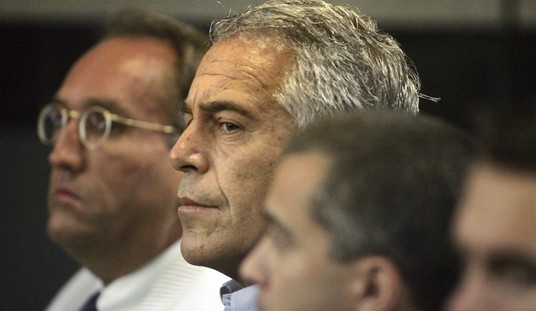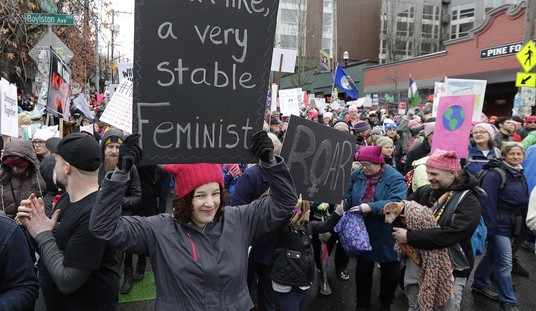
Screengrab from https://youtu.be/_X13UvNBBec
Wednesday’s ‘trial’ of Attorney General William Barr was reminiscent of the Kavanaugh confirmation hearings. Decorum was out. Incivility was in. The Democrats tried hard to land a knockout punch on Barr, but to their great dismay, the man remained unruffled. They tried to surpass each other with their rhetoric. Many called for his resignation. Most seem to agree that Maisie Hirono (D-HI) was the worst offender, although Richard Blumenthal (D-CT) certainly was a close second.
Democrats’ hatred of Trump has made it impossible for them to accept his vindication. They have almost three years invested in this fight and it’s hard for them to let go. They will seize upon anything at all to keep their hope alive. In this case, they’ve chosen the letter Robert Mueller wrote to Barr in late March after he released the four-page summary of the Mueller Report. The letter can be viewed here.
Perhaps I lean too far toward conspiracy theory, but it seems to me that Mueller’s letter was intended for the very purpose it actually served. It functioned as an “insurance policy,” a way for the Mueller team to run interference if the left complained too much about their inability to charge Trump with a crime. In fact, it was similar to Peter Strzok’s insurance policy, in the event that Trump were to win the presidency.
So, they latched onto the letter and Barr became their new punching bag. They hurled insults and accusations of perjury and threatened impeachment.
But the whole thing is all smoke and mirrors, just as the accusations of Russian collusion against Trump were. Be that as it may, we’ve learned the hard way how a narrative, if it is repeated often enough and long enough, becomes a weapon which can cause tremendous damage. This is the anatomy of a smear. This is what Barr meant when he spoke of “turning the criminal justice system into a weapon.”
Democrats are quite good at it. They’ve had a lot of practice. But this time, we know better.
We have several indisputable facts on our side.
- Prior to releasing his summary of the report to Congress, Barr asked Mueller if he would like to view it. Mueller declined.
- Upon receiving the letter, Barr called Mueller and learned that he did not feel Barr misrepresented the findings of the report. Instead, Mueller admitted it was the media coverage that bothered him.
- If Mueller had enough evidence to charge Trump with obstruction, he would have done so.
- Because Mueller could not bring a case against Trump, but wanted to maintain pressure on him, he submitted a report without a conclusion. This would allow House Democrats to pick up where he left off. It is uncommon for a prosecutor to do this.
- Because Mueller did not make a decision, it was left to Barr. No one interfered with Mueller’s investigation. And he had vast resources at his disposal as well as unlimited time.
- Ultimately, Barr released the full report with only the light redactions which were legally necessary. He had planned to do so all along, so why would he risk lying?
- He was not required by law to release any portion of the report.
The National Review’s Andy McCarthy appeared on Fox News’ “America’s Newsroom” and offered the most simple explanation of all. (Segment begins at 24:10 in the video below.)
Prosecutors are supposed to make one decision. Either there’s enough evidence to charge or there’s not. Ordinarily, if there’s not enough evidence to charge, you don’t hear anything.
Mueller took a different approach. Mueller’s idea was even if he didn’t find collusion, there had to be a lot of mood music behind everything that he returned, so for example, you would get the Roger Stone indictment which has some tiny process charges at the very end, but first you have to go through huffing and puffing about almost-collusion.
In a normal case, a judge would not allow that to go on. That kind of stuff would get stricken out of the charges as surpluses because it’s not relevant to the thing that’s actually been charged by the prosecutor.
What Mueller wants is to get the narrative out so the public can see how hard they tried to find collusion and how they looked under every rock for it.
Barr is saying, in what is the traditional way of looking at things for prosecutors, that is, was there enough evidence to charge or wasn’t there? And when he says there appeared to be agreement as far as he could detect, what he means is the only thing that’s of any relevance which is the bottom line for any prosecutor. Was there enough evidence to charge or wasn’t there? And there wasn’t.
The program’s host, Sandra Smith, displayed a DOJ statement which said, “It would not have been appropriate for me to simply release Volume II [the obstruction portion] of the report without making a prosecutorial statement.”
McCarthy responded:
The only thing the public ever gets in a case is the prosecutorial judgement. You don’t get all the to-ing and from-ing, you don’t get a bunch of information that doesn’t quite cut it as information. When an investigation gets closed without charges, you don’t get to find out what all the evidence is in a normal case. You get the bottom line and he’s quite right about that.
This episode is designed to fuel a political narrative. But we don’t need a narrative – we don’t even need anyone to explain the report plainly. That’s because we now have the report. We can read it for ourselves. The rest is noise.
Barr said that the DOJ is moving on. Although they have moved heaven and earth to prevent it, the tables have turned and the situation that Democrats never thought would come to pass is here. Time’s up.
https://www.youtube.com/watch?v=EnrWNlAlTwo













Join the conversation as a VIP Member